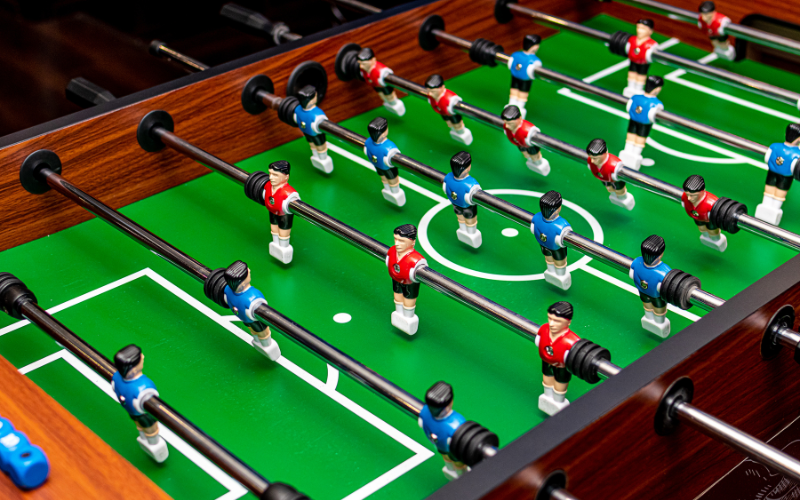Digital Marketing Strategy’s Internal Impact
What’s your strategy behind the digital marketing strategy? Every marketer is messaging to multiple audiences at once: your buyers, of course…but...
5 min read
![]() Rogue Marketing
Jul 26, 2016 6:56:37 PM
Rogue Marketing
Jul 26, 2016 6:56:37 PM
This simple game has captured the worldwide attention of consumers and companies alike. Business owners are scrambling to get in on the action, figure out how they can use the momentum and popularity to their advantage, or wondering if it’s all just a bunch of hype.
Does it have any real staying power, or will it eventually flame out?
According to Forbes:
“Pokemon Go has now become so popular that it has pushed Nintendo’s market cap past $42 billion, making it worth more to the stock market than Sony, which is currently worth $40 billion.”
Pokémon Go has now become the fastest mobile game to reach 10MM downloads worldwide, cruising past big name apps like Candy Crush and Angry Birds. Its daily usage has topped even mega-social sites like Facebook and Twitter.
The creators of Pokémon Go took an opportunity to capitalize on technology that already existed, but hadn’t been really executed on this level. They’ve taken augmented reality from a sidelined concept to something that actually makes money. Inc.com christened Pokémon Go the “marketing gateway drug”, boosting the adoption rate of augmented reality to users, and paving the way for its evolution into other arenas.
Analysts have their hands full trying to predict the fate of Pokémon Go. Reports are now coming in showing the market value starting to slip, but what’s really important to marketers is the NEXT big thing to come out of this. The underlying technology made popular here will spark the next wave of augmented reality and mainstream gamification for businesses to come.
When Pokémon Go Has Gone – What Happens Next?
Now, mere weeks after the initial Pokémon boom, Business Insider and other sources are already predicting its demise and asking what’s next? As marketer’s, we always need to be thinking about what’s next. Taking stock of what Pokémon Go did right, and where those channels will lead is the logical next step. While we were discussing Pokémon Go (and playing it…) here in the Rogue office, we narrowed down the defining variables of success to these four key elements.
Must-Haves
EXPERIENTIAL
One of the pillars of Pokémon Go’s success is that it is experiential. Users are having a new, never-been-done experience with the game. The augmented reality and mobility elements combined to launch gamers off of their couches and into the Pokémon world. The creators not only captured their attention but physically got people to go places. I would call that engagement, wouldn’t you?
This is what the next generation of younger core gamers want and expect. The avatar came off the screen, and users felt themselves fully participating and engaging with the app. Any new apps need to understand that their audience’s requirements have changed. The Wall Street Journal writes,
“It’s much more than a game—it’s the future of how we’re going to interact with computers.”
There it is in black and white – it is the future.
Businesses need to begin thinking along this higher level of engagement. How can you interact with your audience in a more experiential way? This is an important strategic question that may define your future relationship with consumers.
COMMUNITY
Pokemon Go players are meeting each other, seeing new places, and rediscovering their communities which is benefiting business in a big way. Local businesses have seen their foot traffic and sales have a massive boost. Uber drivers are now capitalizing on dedicated players, who don’t want to walk to every location. Communities have made it a charitable venture too by walking shelter pets, and raising money for animal rescue organizations.
Becoming even more than just a game the app has reached out to new and varied audiences who aren’t the typical gamers and wouldn’t ordinarily play along. Moms, Dads, and even grandparents are playing Pokémon Go with their kids. The age range of the target audience has exploded to include nearly every generation. The reason? Philanthropy, community, and connectedness.
Pokémon Go has been latched onto by some big names and even bigger ideas. It was just recently announced that they are adding a chat feature, bringing another fundamental purpose to the app and another way to keep the younger generations engaged and invested.
There’s even a brand new dating app that gained over 2 thousand users in the first 8 hours.
So do you Swipe Up? Or Down…?
FUN
Games are fun. But competition and winning are the hook to sustain a user’s interest long-term. The next big thing needs to have an aspect of gamification to maintain its popularity and hold on the market. Niantic could definitely use an upgrade in this area for future Pokémon Go upgrades to have more person-to-person competition.
The game also turned the tables in a positive way for girl gamers. Fast Company reasoned that this game became more fun and welcoming for women to play too. It strayed from the dissociative nature of online games where females often hide their gender to avoid trolling and harassment which is a major shift away from traditional gaming. Businesses who ensure the game is fun for as many people as possible will widen their potential reach.
But eventually, the novelty of collecting Pokémon wears off if it’s only for the sake of getting points. From Business Insider,
“In the initial days of playing when the novelty is at its height and going through the lower levels is straightforward, the rewards of playing are such that people are highly motivated to get out and play.”
To take this concept and run with it, subsequent innovators who follow this path need to also incentivize the game. Foot traffic is good, but it doesn’t make users want to buy something necessarily. Companies taking this to the next level could host contests, where players earn credits that can turn into a real cash value upon winning. Adding an incentive and connection to the brand could bridge the gap to realizing a tangible relationship with longevity.
TIMELINESS
One major thing Niantic got right with Pokémon Go was the timing. Its core audience was on summer break. The kids are out of school, and parents are always on the lookout for positive activities to cure the boredom bug. Adults themselves are taking more time off or possibly working shorter hours. Professional sports are on break too, so everyone is looking for something new and exciting to do.
Had they launched later in the Fall or early next year, several factors would have held back their success. When kids are in school or attending after-school and sports activities, they can’t be on their phones nearly as often. Brands are additionally competing with other holidays and events like back to school shopping, Christmas, Valentine’s Day, and St. Patrick’s Day where people’s attention is drawn elsewhere. It remains to be seen if Niantic will make any adjustments to the game to accommodate school phone policies.
An event that had a lot of similarities to the Pokémon Go phenomenon was the ALS Ice Bucket Challenge. The challenge caught on quickly and its popularity lasted for some time because it had many of the same characteristics. For certain, it was absolutely experiential; I can’t say I’ve ever poured that much ice on myself or anyone else before the challenge, and it won’t soon be forgotten either.
The Ice Bucket Challenge was mobile-based, meaning that anyone could snap a quick video and upload it. It was shareable, posting the video on Facebook, tagging and challenging your friends was easy. Watching people get doused in ice water was fun and the bloopers were even better, increasing the shareable nature of the competition. It was extremely philanthropic and joined communities across the world for the same cause.
The Ice Bucket Challenge benefitted from launching at the right time as well, or it would have been the not-so-popular ALS Snow & Frostbite Challenge. The only aspect missing in comparison to Pokémon Go was the gamification element. We could absolutely see that being added to similar events in the future, which would increase their competitive nature and viral popularity.
WHAT’S NEXT?
Right now, CMO’s need to figure out now how they can leverage whatever is the next Pokémon Go and how their brand fits into the equation. Any industries and vendors that are fundamental in supporting the augmented reality platform or associated infrastructure will be in the position to benefit greatly from this development. Begin thinking about your brand in the same way, in relation to the aspects of mobility, community, gamification, incentivizing, and long-term user interest.
The companies who can combine this trend in technology with these marketing elements will be a Level Up against the competition.

What’s your strategy behind the digital marketing strategy? Every marketer is messaging to multiple audiences at once: your buyers, of course…but...

The line between sales and marketing is more blurred than ever. How do you talk to people you know you can help, but who are reluctant to admit that...
In this episode of the Internet Marketing Podcast, Andy is joined by the Managing Partner of Rogue Marketing James Loomstein, to talk about the...